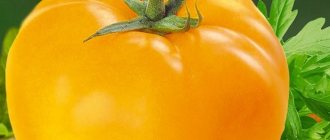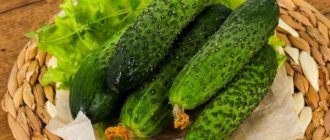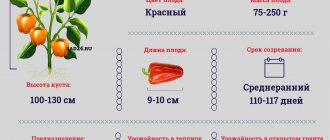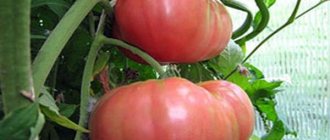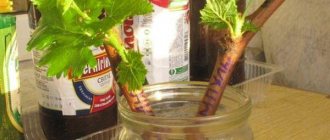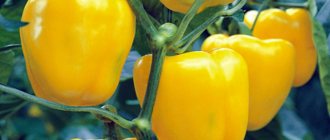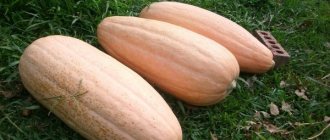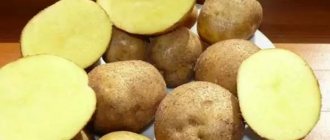Description and characteristics of the variety
Pepper Ilya Muromets is a mid-season variety. Among his values are productivity and large fruit. The first harvests are harvested 120 days after germination of seedlings.
The plants are characterized by standard growth; they have a closed crown (no formation is required). The bushes are compact, low - the length of the stems is within 50-60 cm.
What are the characteristics of the fruit:
- average weight 180-300 g;
- ruby staining;
- pericarp 5-6 mm;
- the skin is smooth and glossy;
- elongated cone shape;
- no transverse ribbing;
- length 12-14 cm.
The taste is dominated by sweetness; such fruits are great for salads and slices. They are also stuffed, stewed, baked, and pickled.
Sweet pepper Ilya Muromets can be cultivated in greenhouses, greenhouses, in open areas - in the field and garden.
Cool pepper Ilya Muromets
Which variety to choose?
In our country, 104 varieties and hybrids of sweet peppers with fruits of the most varied shapes and colors have been released. To get a good harvest, you need to focus on the early ripening of the variety, the place of its cultivation (greenhouse or film shelter), in order to select a variety with the appropriate plant height. Low-growing varieties and hybrids include Winnie the Pooh, Volzhanin, Ermak, Karlik, Lastochka, Tenderness, Yaroslav, F1 Polka. For tall ones (120 cm or more) Alyosha Popovich, F1 Aries, F1 Delgado, F1 Eagle, Ilya Muromets, F1 Indalo, F1 Cardinal, F1 Prego, F1 Ruza, Chrysalite. And, of course, when selecting a variety or hybrid, it is necessary to take into account zoning (Volga-Vyatka region): early ripening with a growing season of 90-120 days: Aries, Fidelity, Winnie the Pooh, Dobrynya, Zdorovye, Oriole, Krepysh, Kuksi, Latino, Montero , Nugi 51, Orange Wonder, F1 Ruza, Snegirek, F1 Fidelio; mid-early (121 - 135 days): Belozerka, Indalo, Lastochka, Gift of Moldova; mid-season (136-140 days): Crystal, Tenderness. What can't peppers tolerate? The crop is demanding on air temperature: it stops growing at temperatures of 10 and above 35°C. Pepper suffers especially from a lack of heat in the early phases of development, as well as during budding and flowering. During this phase of development, temperature changes are detrimental. Pepper is very sensitive to lack of light: plants stretch, flowers and ovaries fall off. With high air humidity, gray mold appears on the fruits, radiant dew appears on the leaves, and with a lack of moisture, growth stops. Too dry air is also undesirable, since spider mites appear on plants. Sweet peppers do not grow in waterlogged and acidic soils. Fresh manure and lime should not be applied to peppers during the year of cultivation. The plant does not like transplants; damaged roots are poorly restored. Does not tolerate mineral fertilizers containing chlorine (potassium salt, potassium chloride). Bad predecessors are tomato, potato, eggplant, and physalis. What do you put up with? Pepper seeds can germinate at temperatures of 8 - 13°C, but only very slowly. Adult plants can withstand temperatures of 15 - 20°C (but growth slows down); at the end of the growing season - short-term temperature drops to 2°C. The crop is more drought-resistant than eggplant, cabbage, and cucumber. Pepper can also be grown in open ground on heavy soil after it has been improved.
What does he prefer? The optimal temperature for seed germination is 22-25°C; seedlings appear 5-7 days after sowing. For normal growth and development, plants need an average daily air temperature of at least 15 ° C, and an optimal air humidity of 60-70%. The crop is light-loving: the higher the illumination, the greater the harvest. Plants especially need high light intensity in the first half of the growing season when flower buds are forming. Pepper prefers fertile, water- and breathable soils (pH 6.0-6.5). Soil moisture should be at least 75-80% HB. Plants are responsive to organic and mineral phosphorus-potassium fertilizers containing a lot of magnesium. The best predecessors are green ones, cucumber, celery, and onion.
How to avoid failures when growing sweet peppers? Pepper is more demanding of soil conditions and heat than tomato. The bed should be protected from the prevailing winds and well lit by the sun. The soil for peppers must be prepared very carefully. In the fall, after harvesting the predecessors, loosen the soil and add humus, peat or compost (8-10 kg per 1 sq. m), as well as mineral fertilizers (g per 1 sq. m): superphosphate 40-45, potassium salt 10-15. Dig up with a full bayonet of a shovel. In the spring, harrow and add urea (30 g per 1 sq. m) under digging. Before planting, try to keep the soil loose. Pepper is cultivated using seedling method. Start preparing seedlings 50-60 days before planting the plants in open ground. When transplanting seedlings into the ground, the soil pot must not be destroyed, otherwise the roots will be damaged and absorption activity will decrease, which is difficult to restore. Water the plants well the day before planting. Proper planting of seedlings plays an important role. Plant the plants in a checkerboard pattern or in a rectangle a little deeper than they were in the pot. On this section of the stem, covered with soil, roots will form, which will help increase the yield. To stimulate fruit formation after planting, do not water the seedlings for 7-10 days. In the future, water the pepper 1-2 times a week and only with warm (18-20°C) water. When cultivating peppers in a greenhouse, be sure to ventilate it, as high air humidity negatively affects pollination of flowers. After watering, loosen the soil slightly, being extremely careful, since the roots of the pepper are located in the surface layer of the soil and are easily damaged. Pepper roots constantly need oxygen. When the soil is compacted, they die and are not restored, so do not allow a soil crust to form. Mulching the soil surface will save you from constant loosening and prevent injury to the roots. Many gardeners have difficulty forming a bush, which depends on the variety. For varieties such as Lastochka, Winnie the Pooh, Kapitoshka, it is enough to remove unnecessary sterile and side shoots below the branching of the main stem, and after the crown closes, also the leaves (before the stem branches). In vigorous plants, when fruit begins to form, remove all side shoots and leaves until the main stem branches. On each plant, leave two or three skeletal shoots, in each subsequent node of two shoots, leave the most developed one, and pinch the other. Tie all skeletal shoots with twine and twist it regularly. So that plants of strong and medium-growing varieties and hybrids have time to form a harvest, pinch all shoots 1 month before the end of the growing season. This will speed up the ripening of the set fruits.
In terms of vitamin C content, sweet peppers surpass all vegetable crops.
It has been noticed that pepper heals the soil; after it, tomatoes, cucumbers, and watermelon grow well.
July worries
l In the first half of July, you should stop liquid feeding of trees with mullein, bird droppings or nitrogen fertilizers, as well as loosening the tree trunks. Later fertilizing leads to a decrease in winter hardiness of plants.
l A large amount of carrion in early July does not mean errors in care. This is a natural reaction of a tree to set a large number of fruits that it is not able to feed: the tree simply discards the excess fruits. The carrion should be removed immediately and buried deep in the ground.
l It is recommended to cut lawn grass regularly at a height of at least 5 cm. If cut lower, frequent watering is required, otherwise the grass will burn out quickly.
l July is the most suitable month for preparing land for seedlings for next year. The earth is stored in a cool place, protected from the sun, moistening and loosening from time to time.
Benefits of Growing Low Growing Sweet Peppers
Most often, all the necessary information about the variety of bell pepper is on the packaging with planting material. If you are a beginning gardener, or are choosing a new variety for planting, pay attention to such parameters as growth conditions (greenhouse or open ground), temperature conditions and timing of fruit ripening. The manufacturer also informs the buyer about the size of the expected harvest and the plant itself.
How does growing tall varieties differ from short ones, and in what cases is it necessary to plant certain plants in the ground? It is known that tall varieties are, most often, the most productive bell peppers. In closed ground conditions, up to 10-12 kg of juicy and colorful fruits are collected from one bush. Modern selection produces hybrids that can bear fruit before the beginning of winter. But these bushes require regular attention: they must be tied up and shaped so as to prevent the main stem from withering or weakening. In addition, tall varieties require regular mineral and organic nutrition.
In cramped conditions of country gardens and greenhouses, it is best to grow low-growing peppers. Low bushes dotted with multi-colored fruits are ideal for tunnel options for film shelter. The yield of such varieties is somewhat lower, however, due to the density of planting in the ground, good and stable results can be achieved.
Important! When choosing low-growing varieties, pay attention to the fact that all these plants love good light. Try to choose an unshaded part of the garden or a greenhouse with bright daylight.
Experienced farmers grow early, low-growing varieties of pepper in order to get quick first harvests with minimal costs for care and feeding. But beginners who are growing vegetables for the first time are strongly recommended to start with low bushes. They are also perfect for those summer residents who come to their plots only once a week. Resistance to arid and hot climates, slow production of shoots and side branches and a powerful stem - these are the main advantages of growing pepper on low bushes.
Why do gardeners prefer low-growing varieties?
Pepper is a heat-loving crop, so to get a good harvest, especially in cold regions, you need to work hard. The main advantage of low-growing varieties is that there is no need to form bushes. This procedure is difficult for many summer residents, because it needs to be learned. In children, the stem simply does not branch, so it is easier to care for such peppers.
Low plants also have the following advantages:
- adaptation to climate change;
- low risk of morbidity;
- neat bushes;
- the ability to grow in large quantities on one square.
Of course, it is impossible to harvest these peppers in the same volume as indets. Low-growing varieties initially form fewer clusters and do not bear fruit for as long. However, early ripening of the pods makes it possible to obtain high-quality fruits in a short time.
The dacha lands of private owners are not always spacious, but they want to try different crops. Small pepper bushes are a great way out. To protect them from the cold, protection on the arches in the form of film or non-woven material can be installed on the beds.

